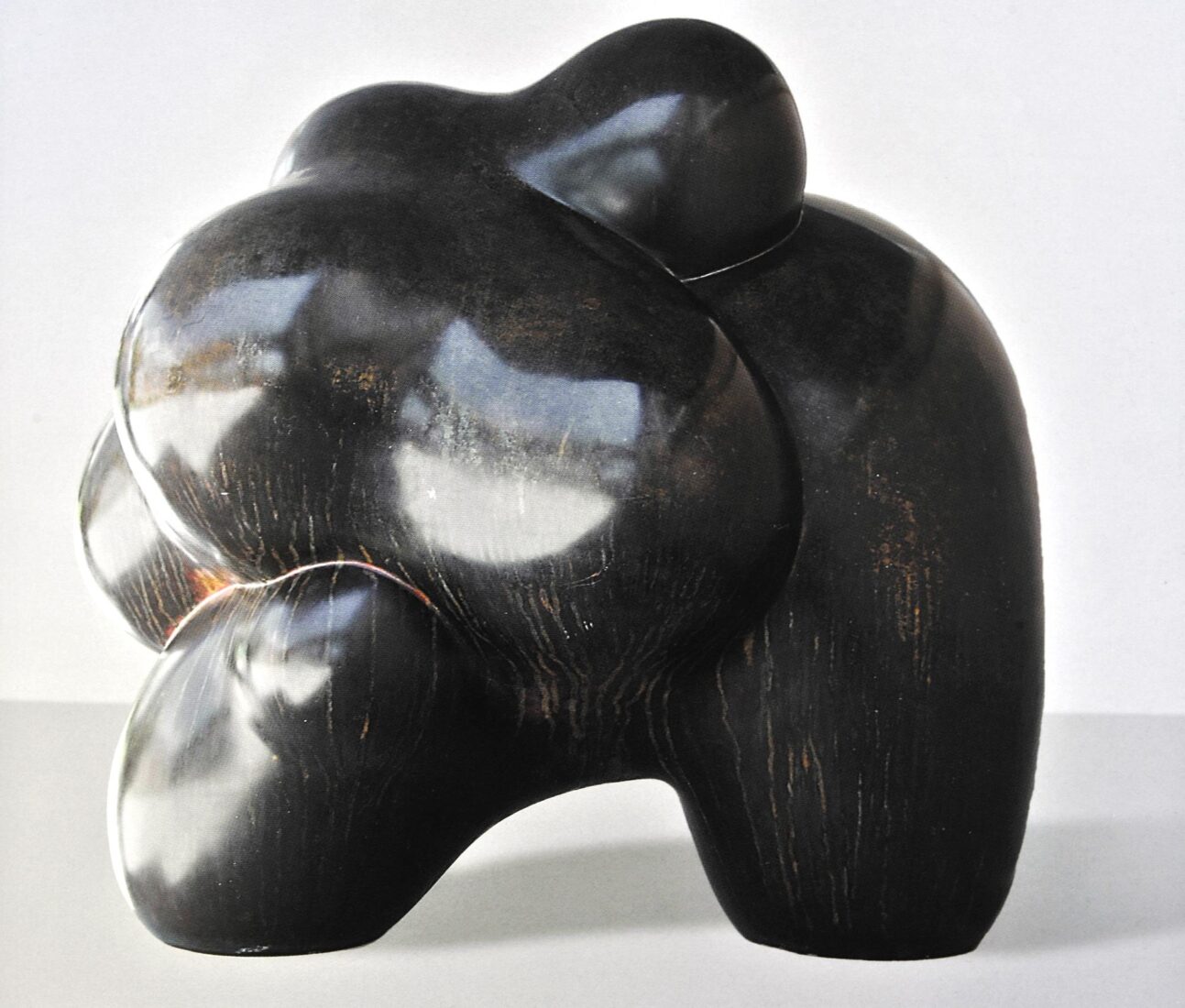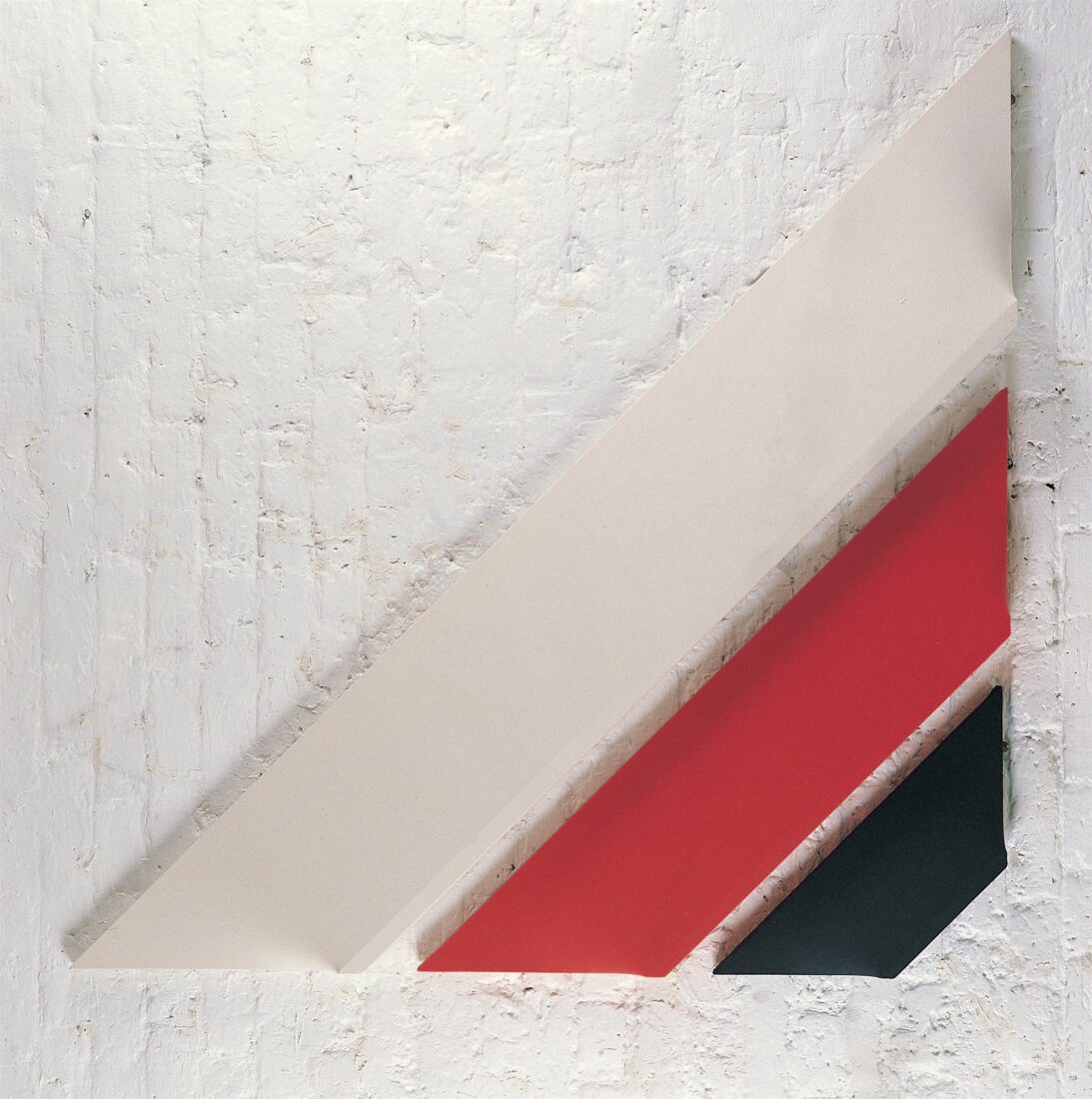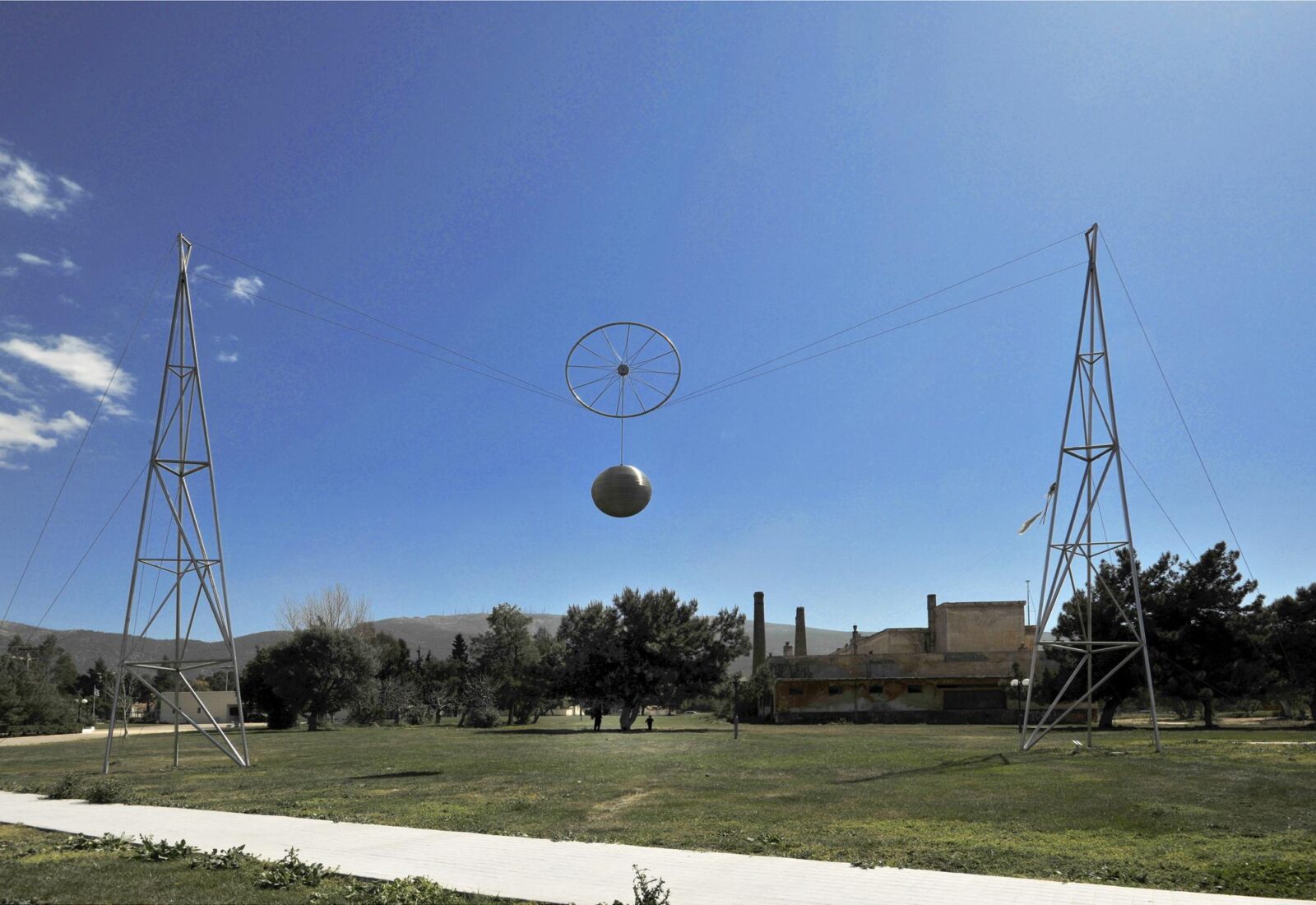Sofia Vari started out as a painter but soon turned to sculpture. The human figure was her exclusive subject in her early works. Corpulent women, rendered with intense schematization and an absorption with the general elements which compose the figure, worked with powerful curves and a particularly heavily stressed fluidity of the volumes, were the precursors of the abstract compositions that were to follow. In these compositions, her interest is focused on subjects inspired by people or events in Greek mythology, while her style contains a number of influences, mainly from the work of Henry Moore and Jean Arp.
In “Centaur”, as in other works of mythological content, the subject is only the motivation for creating comprehensive compositions, based on curved and full volumes which seem to develop around an invisible nucleus surrounding it. Faultlessly smooth and polished, the volumes are combined and interwoven rhythmically, without angular interventions and interruptions of their alternations and thus form shapes spare and clean.
Michael Michaeledes initially worked within representational painting. Gradually his manner became more abstract, indeed becoming completely abstract by 1959. Always aspiring to capture the essence of light and to exploit the possibilities it offered for the highlighting of his compositions, he limited his use of color and along with his painting began to create reliefs and structures to be viewed from all sides, initially white and then in one or even more colors, which were composed into simple geometric shapes. In these constructions he makes use of the frame and canvas, but reverses their traditional use, as the frame functions as the interior support to which is adapted and stretched the fabric. The geometric compositions that arise from this process, repeating a shape in the same size or a gradually increasing one, are minimalist renderings of natural forms, familiar human structures or ancient architectural elements. At the same time, with the placement of the frame in the interior and the manner by which the material is stretched, even with the distance that one piece of material is placed from another, such as in “Leaning”, he manages to exploit the possibilities of light which thereby creates a host of chiaroscuros, projecting the volumes to the utmost and stressing the relief texture of the surfaces.
Theodoros very soon abandoned the representational efforts of his student years to impose his personal independent spirit on his work. He has always sought a way for sculpture to establish a close relationship with the public by creating sculptures for public spaces.
His works of the 1960s were sculptural compositions mostly in bronze or steel. He experimented with the harmony and equilibrium of forms on the ground and in the air with Surrealistic or Dadaistic prototypes as his points of departure. In this vein, in 1993, Theodoros created the construction “Twelve Ray-Spoked Wheel on Cables Counterbalanced by a Sphere”. Impressive and imposing, this construction is the only version realized in a scale appropriate for a public space. At the same time, it is a proposal for a sculpture that functions in an urban setting in the post-industrial age.




